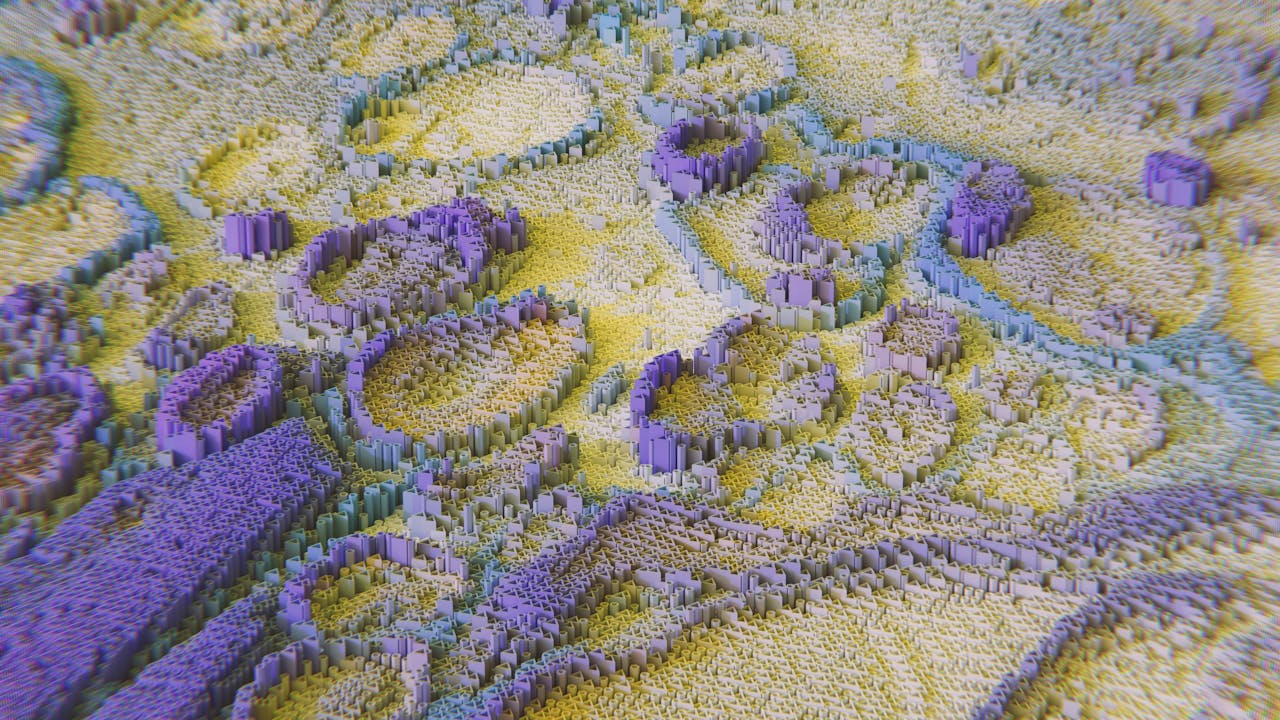The Beginner’s Guide to Generative AI: With Use Cases & Examples
Introduction
In recent years, Generative Artificial Intelligence (Gen AI) has changed the way we create and interact with digital content, code, and more, promising a future where anyone (with nothing more than a computer, an internet connection, and an idea) can create Picasso-level art, program a SaaS company in minutes, and explore uncharted creative territories. As a rights holder, publishing company, or content creator looking to license your data for AI, understanding Gen AI is crucial. This article aims to explain Gen AI from the ground up, explain its workings, and highlight why your high-quality content is so valuable in this new era.
What is Generative AI and How Does it Work?
Generative AI refers to artificial intelligence systems that can create new content, including text, audio, image, video, 3d models, and even code. These systems learn patterns from vast amounts of existing data and use that knowledge to generate new, original content.
At its core, Gen AI systems ‘learn’ through a process called "training." During training, the AI system analyses enormous datasets – which could include books, articles, images, or audio recordings – to understand patterns, structures, and relationships within the data. The system then uses this learned knowledge to generate new content that mimics the style and characteristics of the training data.
For example, a text-based Gen AI system trained on a large collection of novels could learn to write new stories in a similar style. An image-based system trained on millions of photographs could create new, realistic images, even if they weren’t included in the original training dataset. The way different AI systems "learn" from their training data varies significantly. Two prominent types of models in Gen AI are Large Language Models (LLMs) for text generation and diffusion models for image generation. While we'll delve deeper into how these in subsequent articles, let's briefly explore diffusion models to understand their impact on image creation and why vast amounts of high quality data is so important.
Understanding Diffusion Models in Image Generation
One of the most exciting advancements in image-based Gen AI is the use of diffusion models, which are capable of generating high-quality, realistic images from scratch.
So, what exactly are diffusion models? Imagine starting with a blank canvas that's filled with random noise—like static on a television screen with no signal. A diffusion model works by gradually transforming this noise into a coherent image through a series of small, calculated steps.
Here's how it works:
Starting with Noise: The model begins with a completely noisy image.
Step-by-Step Denoising: At each step, the model applies what it has learned during training to reduce the noise slightly, revealing a bit more of the underlying image structure.
Iterative Refinement: This process repeats many times. With each iteration, the image becomes clearer and more detailed.
Final Image Creation: After numerous steps, the noise has been entirely transformed into a fully formed, detailed image.
Diffusion models are trained on large image datasets. They learn how to reverse the process of adding noise to an image (which is easy to do) to gradually reconstruct an image from noise (which is much harder). By mastering this reverse process, they can generate entirely new images that look remarkably realistic.
For instance, Midjourney uses diffusion models to create images from textual descriptions. If you input a prompt like "a surreal landscape of floating islands with waterfalls," the model can generate a vivid image that captures the essence of your description. This capability stems from training on rich datasets filled with high-quality images across various subjects and styles.
The Need for High-Quality Training Data
The performance of diffusion models - and Generative AI systems in general - is directly tied to the quality and diversity of their training data. For example, using high-quality images enables the models to capture fine details and textures, while diverse content allows it to handle a broad range of subjects and styles. This is where your content becomes invaluable. Let’s break this down further:
Quantity and Diversity
Quantity: Training on vast amounts of data allows the model to learn a wide array of patterns and structures. The more data the model has access to, the better it can generalise from training examples to new, unseen scenarios.
Diversity: Diverse training data exposes the model to a broad range of subjects, styles, and contexts. This diversity enables the model to handle a variety of inputs and generate outputs that are not limited to narrow themes or styles.
How this helps with generalisation: A model trained on a large, diverse dataset can generate outputs applicable to a wide range of situations, rather than just reproducing the specific examples it has seen. This generalisation is crucial for creating content that is novel yet coherent and contextually appropriate.
Quality
High-Quality Outputs Require High-Quality Inputs: To put it simply, AI models are only as good as their training data. Models can only generate high-quality outputs if they've been trained on high-quality data. If the training data contains low-resolution images, errors, or noise, the model is likely to reproduce these flaws in its outputs.
Capturing Fine Details and Nuances: High-quality data allows the model to learn intricate details and subtle nuances, which are essential for generating realistic and detailed content.
Generative AI Use Cases & Examples
Gen AI has found applications across various industries and creative fields. Here are some notable examples, along with companies at the forefront of these technologies:
Language and Text:
Content creation: OpenAI's GPT models (used in ChatGPT) can write articles, blog posts, and marketing copy.
Creative writing: NovelAI uses AI to help authors generate story ideas, plot outlines, or even entire short stories.
Language translation: DeepL utilises AI to provide highly accurate and fluent translations across multiple languages.
Visual:
Image creation: Midjourney and DALL-E 2 generate original artwork or photorealistic images from text descriptions.
Design: Canva's Magic Studio uses AI to help create logos, social media posts, and other graphic designs.
Video generation: Runway ML offers AI-powered video editing and generation tools, including the ability to create short video clips from text prompts.
Audio:
Music composition: Udio and Suno allow you to create original music from natural language prompts.
Voice synthesis: ElevenLabs provides ultra-realistic AI voices for voiceovers, dubbing, and audiobooks.
Sound effects: Replica Studios offers AI-generated sound effects and voice acting for games, films, and other media.
Multi-modal AI:
Anthropic's Claude can analyse images and documents, answer questions about them, and even edit or generate new content based on visual inputs.
OpenAI's GPT-4 with vision capabilities can interpret and describe images, as well as solve problems that involve both textual and visual information.
These examples showcase the diverse applications of Gen AI across various creative and technical fields. As the technology continues to advance, we can expect even more innovative uses and specialised tools to emerge.
Why Your Content Matters
As rights holders and content creators, you possess:
Expertise: Your content represents years of knowledge, experience, and creativity in your field.
Quality: Your work has undergone rigorous editing and refinement processes.
Diversity: Your content may cover niche topics or unique perspectives that enrich the AI's understanding.
Copyright Protection: Your content is protected, making it valuable for AI companies that need properly licensed materials.
When AI companies seek to license your content, they're not just looking for raw data—they're seeking the gold standard in your field. Your high-quality content helps ensure that Gen AI systems:
Produce Accurate and Reliable Outputs: Quality data leads to quality results.
Understand Nuanced Language and Complex Concepts: Vital for generating meaningful and contextually appropriate content.
Generate Creative and Diverse Content: Rich and varied training data allows AI to push creative boundaries while respecting established norms.
Avoid Biases and Inaccuracies: High-quality, vetted data helps prevent errors and biases found in lower-quality sources.
Licensing your Data
As a rights holder, you can license your content and data to AI companies through AI data licensing platforms like Valyu. Valyu connects rights holders with AI companies seeking diverse, high-quality training data, acting as an intermediary to facilitate the licensing, discovery, and distribution of datasets. Our platform provides tools to process their data for AI training and scale licensing agreements, enabling content creators, publishers, and data owners to offer their datasets for AI training and various applications, while AI companies can easily search for, license, and responsibly use these datasets through Valyu.
Conclusion
Generative AI is changing how we create, consume, and interact with digital content, creating opportunities across industries, from media and entertainment to research and product development. For rights holders and content creators, understanding this technology is not only crucial but also empowering. Your high-quality content forms the foundation upon which these AI models build—whether they’re generating photorealistic images, composing music, or automating content creation, they rely on your work to power this new wave of creative tools.
As AI's capabilities continue to evolve, the demand for diverse, accurate, and well-attributed datasets will only grow. By licensing your content for AI training, you can play a pivotal role in shaping the future of generative AI while also ensuring your intellectual property is properly valued and protected.
If you’re a rights holder (content creator, publisher) interested to learn more about licensing and monetising your content, schedule a call with us and we’ll walk you through the process.
—-
Cover Image by Google DeepMind from Pexels.



